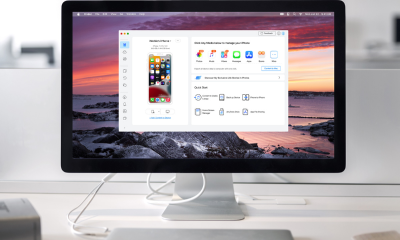Personal Finance
How To Pay Off Credit Card Debt

If you’re wondering how to pay off your credit card debt, you’re not alone. The Federal Reserve’s Center for Microeconomic Data reported a record-high $986 billion in credit card debt in the last quarter of 2022, an increase of $61 billion from pre-pandemic levels.
This article will explore some of the best tactics you can use to pay off your credit card debt so you can get back on the road to financial freedom.
Simplify your debt with Accredited
Click on your state and see if you qualify to reduce your credit card payments by up to 40% to be debt free in just 24-48 months.
Get Started
Terms & Conditions apply.
8 ways to pay off credit card debt fast
You’ve decided to get out of debt and get that weight off from around your neck, but where and how do you start? The truth is, there’s no one-size-fits-all solution to paying off credit card debt. Fortunately, there are a few proven strategies to tackle your credit card debt and get back on track.
-
Map out a repayment plan
-
Dispute any inaccurate credit card charges
-
Pay more than the minimum payment
-
Negotiate a better rate with your credit card issuer
-
Look into a personal loan to consolidate your debt
-
Get a balance transfer credit card
-
Cut your monthly expenses and budget
-
Contact a credit counseling service for professional help
1. Map out a repayment plan
The first step in how to pay off credit card debt involves choosing the strategy that works best for your unique situation. Two of the most popular strategies include the debt snowball and the debt avalanche approaches.
The debt snowball method
This payment strategy is specifically for people who struggle to stick to a debt reduction plan when there seems to be no end in sight.
Popularized by personal finance expert Dave Ramsey, the “debt snowball” focuses on paying off your smallest debts first, then your next-smallest balance, and so on. According to some behavioral economists, eliminating small debts early on in the paydown process can be a worthwhile mental reward that helps some people stay motivated to stick with it.
This isn’t quite as cost-effective as paying off the high-interest debt first, but if it gives you the motivation to buckle down and pay off your debts, it might be the preferred route.
The debt avalanche method
Also known as debt stacking, this method focuses on paying off your cards with the highest interest rates first, and then, once those are paid off, moving to those with the lowest interest rates. This approach makes the most mathematical sense, since you’re shortening the amount of time you’re paying off the credit cards that are charging you the most money.
Say, for instance, you have two credit card accounts: one with a credit card debt of $1,000 with an 8% interest rate and another with a debt of $2,000 with a 10% interest rate. With the debt snowball method, you would pay off the $1,000 first and then move on to the $2,000 debt. Meanwhile, with the debt avalanche method, you would first pay off the $2,000 debt because of its higher interest rate.
2. Dispute any inaccurate credit card charges
You shouldn’t have to pay what you don’t owe. Look over your credit card statements to see if there are any inaccurate charges. If you notice inconsistencies with your credit card history, it’s important that you dispute the credit card charge as soon as possible. The Fair Credit Billing Act stipulates the process for disputing a credit card charge and how long you have to respond. It also outlines how creditors must handle these disputes and protect your rights.
3. Pay more than the minimum payment
If you have extra funds available, it’s in your best interest to make monthly payments that exceed the minimum amount due. When you only make the minimum payment, most of your funds go toward your interest and don’t significantly reduce the principal balance.
For instance, say you have a credit card balance of $2,000 with an annual percentage rate (APR) of 18%. If your minimum payment each month is $40 and you stick to this amount, it will take you six years and $1,240 in interest to pay off your debt. However, if you make monthly payments of $100, you can pay off the debt in half the time and pay only $416 in interest.
Credit card interest is compounded daily, and the finance charges you accrue are based on your account’s average daily balance. That means that every day you wait to make a payment, you’ll have to pay more in interest charges.
If you get paid every two weeks or bimonthly, making two payments a month might be feasible; if you’re paid more often — say, you get a weekly paycheck or you’re a tipped worker — you might want to consider jump-starting your debt-management plan by paying weekly.
Just make sure that the total amount of money you pay by the due date on your credit card statement is at least as much as your minimum payment, because late fees and penalty rates still apply if you fail to do so.
Here’s another hot tip: Lowering your debt quickly can also improve your credit score by lowering your credit utilization, which can make it easier to qualify for a balance transfer credit card (read on for more information on how to do that).
4. Negotiate a better rate with your credit card issuer
If you’re looking at how to pay off credit card debt fast, negotiating better interest rates with your credit card issuers is one of the best ways to do so. Interest rates can vary widely from card to card and between different issuers, so it’s worth checking how much you pay for each card.
When you call to negotiate your debt, mention how long you’ve been a customer, how much debt you have and how responsible you are with your payments. You may be surprised how often these companies are willing to lower their interest rates to keep you as a customer.
You can increase your chances of success in getting a better interest rate by paying your bills on time, keeping credit utilization low and maintaining a good credit score. You can save money in the long run by negotiating better interest rates and pay off your debts faster. Moreover, you can use the extra money you save to make larger payments toward your debt, thus reducing the interest you pay.
5. Look into a personal loan to consolidate your debt
If you don’t have excellent credit, applying for a personal loan and paying off your credit card debt in full might be your best option. You can search for a lender online or check with a local bank or credit union to see if they offer personal loans (they might also be called debt consolidation loans).
You’ll still be paying interest, but likely at a lower rate, since APRs for personal loans are often several percentage points lower than credit card APRs. You’ll also only have to make one debt payment every month instead of having multiple credit card accounts and due dates to keep track of.
Credit card debt consolidation is only a good idea if the interest rate of the loan you take out is lower than the one from your credit cards and if you can commit to paying off the loan within a reasonable time. It’s also important to consider how long you have before promotional rates expire and how long you will take to pay off the loan. Lastly, before consolidating credit card debt, ensure you read the fine print and know how much the loan will cost to get the best debt consolidation loans for your situation.
6. Get a balance transfer credit card
If you have a high credit score, you might be eligible for a card that can help you pay down your outstanding balance sooner.
Balance transfer credit cards offer 0% introductory APR rates for a promotional period — this varies, but 12 to 18 months is the norm. This intro period gives you a window of opportunity to pay down your debt quickly: Since you’re not paying interest, your entire monthly payment goes straight towards paying down the principal.
Make it a priority to pay down your balance before the promotional period ends, though — especially if the non-introductory APR rate is on the high side.
A caveat: A balance transfer credit card that also offers 0% APR on purchases might seem like a nice perk, but it’s important to focus on your top priority (paying off your credit card debt).
Also, know that many balance transfer cards charge a balance transfer fee of at least 3% of the balance you’re transferring — an amount that can add up if you have a large amount of debt. Look for cards that have low — or no — balance transfer fees, and more of your money can go towards servicing your debt. (For more information, read: Best Balance Transfer Cards.)
7. Cut your monthly expenses and spending
Nobody likes to hear this, but one of the easiest ways to quickly pay off debt is to throw more money at it every month.This means finding new ways to save, like canceling your cable TV or reducing the number of nights you order takeout. Anytime you can make more than the minimum payment on your credit card bills, you’re one step closer to being debt-free.
To know how much money you can apply toward your debt payments, you must first identify where your money is going. Take the time to write down your monthly expenses and spending habits. This can be a great way to identify areas where you can cut back.
You might also consider closing a credit card if you realize you have too many to keep track of, as this could be an additional source of unnecessary spending.
8. Contact a credit counseling service for professional help
If you’ve already tried the tactics on this list and are still struggling to get your credit card debt under control, it might be time to call in the pros. Nonprofit credit counseling services will look at your credit card debts in the context of your other financial obligations, like a mortgage payments or a line of credit, car payments or student loans, and work with you to create a repayment or debt management plan.
Debt management plan
A debt management plan (DMP) is another way to pay off credit card debt. With a DMP, you work with a credit counseling agency to create a payment plan that works best for your situation. The credit counseling agency will work with your creditors to negotiate a lower interest rate, waive fees and offer a lower monthly payment. With a DMP, you make one monthly payment to the credit counseling agency and they will distribute it among your creditors.
A DMP can also help stop late fees, collection calls and credit damage by helping you remove negative items from your credit report. They also share ways to improve your credit score if needed. Lastly, DMPs offer the advantage of paying off your credit card debt reasonably by providing a structured payment plan.
How much credit card debt is too much?
There isn’t a definitive answer to this question. Various factors can indicate when your credit card debt is too high, such as when you have difficulty making the minimum payments due or when you frequently use one credit card to pay off another. These are three possible ways to determine whether you might have too much credit card debt:
-
Your credit utilization ratio is above 30%: This ratio compares the amount of credit you use to the amount of credit available. Ideally, your utilization ratio should be 30% or less.
-
Your debt-to-income ratio exceeds 36%: This ratio compares your monthly average credit card debt to your gross income. Ideally, you want to keep your DTI ratio below 36%.
-
Your credit card debt ratio makes up more than 15% of your monthly income: This ratio looks at how many monthly credit card payments you make compared to your total net monthly income. Ideally, your credit card debt payments should make up no more than 10% to 15% of your total net monthly income.
Summary of how to pay off credit card debt
While there isn’t a one-size-fits-all answer when it comes to how to pay off credit card debt, the key is to find a solution that works for you.
Start by setting reasonable, achievable goals and use the above methods to develop a plan for how to get there.
Make sure to do thorough research when looking for a solution, and always read the fine print when signing up for any program. By taking these steps, you’ll be well on your way to paying off your credit card debt.
© Copyright 2023 Money Group, LLC. All Rights Reserved.
This article originally appeared on Money.com and may contain affiliate links for which Money receives compensation. Opinions expressed in this article are the author’s alone, not those of a third-party entity, and have not been reviewed, approved, or otherwise endorsed. Offers may be subject to change without notice. For more information, read Money’s full disclaimer.
Read the full article here

-

 Side Hustles5 days ago
Side Hustles5 days agoThe DOJ Reportedly Wants Google to Sell Its Chrome Browser
-

 Side Hustles5 days ago
Side Hustles5 days agoHow to Create a Unique Value Proposition (With Tips & Examples)
-

 Investing6 days ago
Investing6 days agoThis Founder Turned a Hangover Cure into Millions
-

 Investing4 days ago
Investing4 days agoAre You Missing These Hidden Warning Signs When Hiring?
-

 Investing4 days ago
Investing4 days agoGoogle faces call from DuckDuckGo for new EU probes into tech rule compliance By Reuters
-

 Make Money4 days ago
Make Money4 days ago7 Common Things You Should Never Buy New
-

 Passive Income5 days ago
Passive Income5 days agoHow AI Can (and Should) Drive Innovation Across Your Entire Company
-

 Investing5 days ago
Investing5 days agoBarbara Corcoran, Lori Greiner Differ on ‘Quiet Vacationing’


















